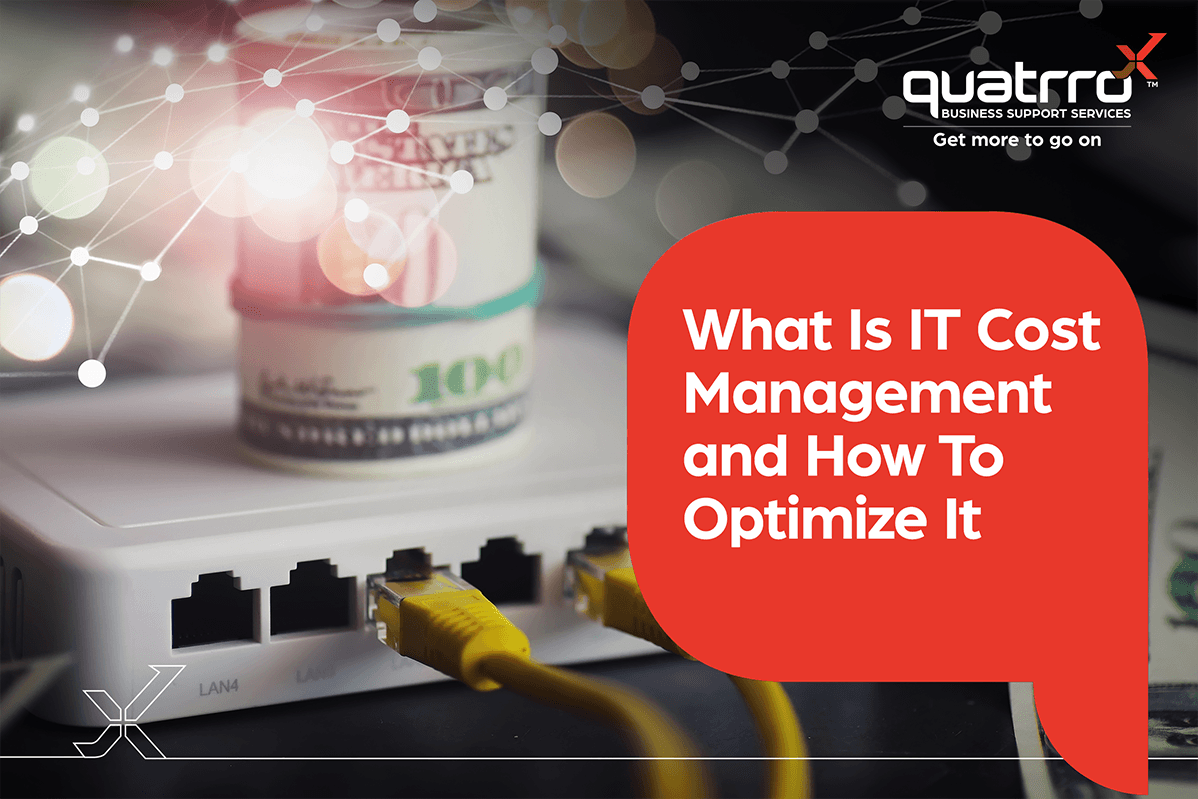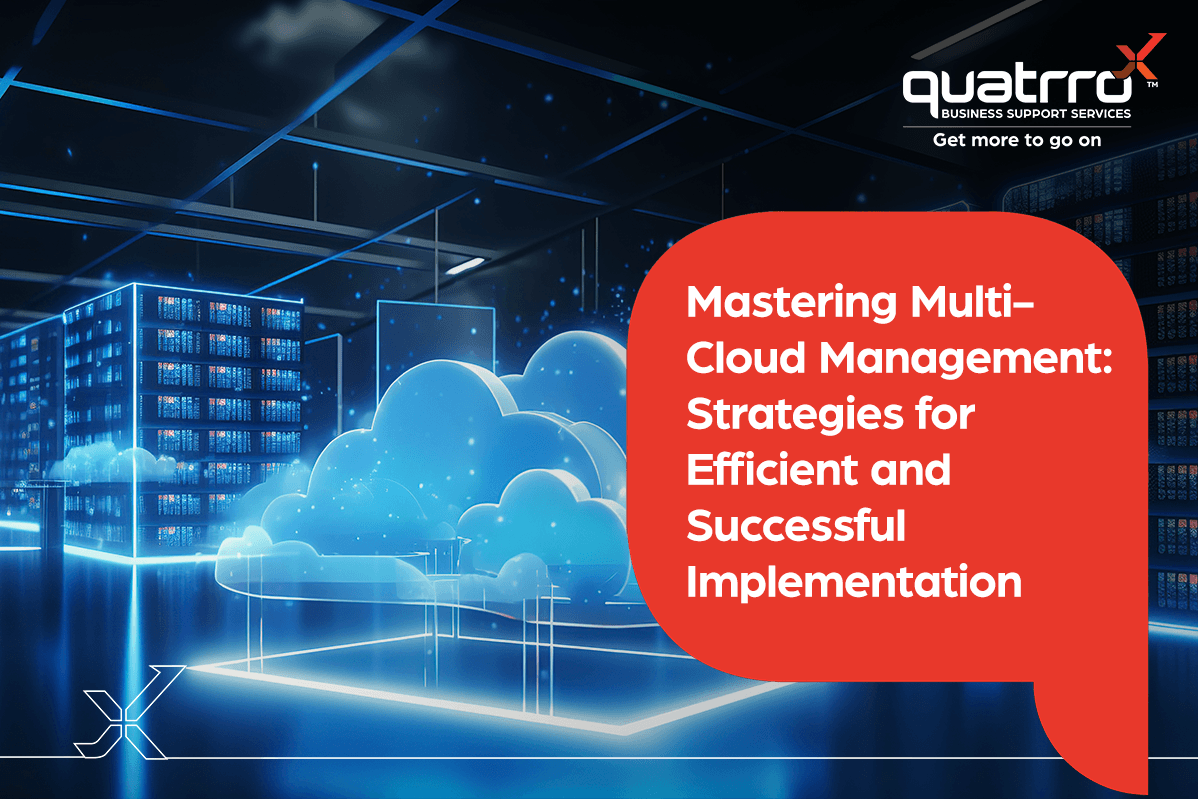Blog Details
What Is IT Cost Management and How To Optimize It
April 23, 2024

Nowadays, as technology underpins virtually every aspect of business operations, managing the costs associated with IT resources has become a key concern for organizations. IT cost management focuses on monitoring, controlling, and optimizing the expenses related to an organization’s information technology assets. This article will break down what IT cost management is, its benefits, how it’s different from just cutting technology costs, and whether hiring outside companies to manage IT costs is a good idea.
What Is IT Cost Management?
IT cost management is the process of monitoring all the money a company spends on its technology. This involves looking closely at costs to make sure they’re necessary and align with the company’s goals. It’s not just about keeping spending low but ensuring that every dollar spent on technology brings value to the business.
For example, if a company spends money on a new software system, IT cost management would involve making sure this system improves operations or helps the company make more money, ensuring the investment is worth it.
Good IT cost management brings several benefits. First, it helps businesses plan their budgets better. When companies know exactly where their IT spending is going, and the return on investment (ROI) they are seeing on that spending, they can make smarter decisions about where to spend more or where to cut back.
Second, it makes everything more transparent. With clear records of IT spending, companies can see which areas might be costing too much or not delivering enough value, helping them make better choices in the future.
Third, it allows businesses to adapt quickly. In a world where technology changes fast, being able to shift IT spending to where it’s needed most can give companies a competitive edge.
Optimizing IT Assets
Optimizing IT costs encompasses a wide range of assets, each offering unique opportunities for cost savings and efficiency improvements:
- Hardware: This includes not only computers and printers but also mobile devices and other peripherals. Optimization can be achieved through strategic procurement, lifecycle management, and asset disposition.
- Infrastructure: Servers, networks, and storage systems are critical components. Cost savings may be realized through consolidation, virtualization, and the adoption of energy-efficient technologies.
- Cloud Services: By evaluating and adjusting cloud service subscriptions and usage patterns, organizations can significantly reduce costs associated with over-provisioning and underutilization.
- Shared Services: Centralizing IT services such as helpdesks, application development, and network management can eliminate redundancies and promote economies of scale.
- Applications: Rationalizing the application portfolio to retire obsolete or redundant applications and investing in multi-use platforms can lead to substantial cost savings.
Benefits of IT Cost Optimization
One of the primary benefits of IT cost optimization is increased profitability, but there are other benefits to a thorough review of IT expenditures:
- Reduced Complexity: Streamlining IT operations and automating processes lead to a more manageable IT environment, reducing the risk of errors and downtime.
- Risk Mitigation: A thorough review of IT expenditures helps identify and eliminate shadow IT risks and ensures that investments remain aligned with business needs.
- Innovation Funding: Savings achieved through cost optimization can be reinvested in innovation and efficiency projects, ensuring the organization remains at the forefront of its industry.
The Difference Between Cutting Costs and Optimizing Them
Cutting IT costs means spending less money, which might involve canceling services or buying cheaper but less effective tools. While this can save money in the short term, it can also mean missing out on benefits that could help the company grow or improve.
Optimizing IT costs, however, means spending money in a smarter way. It’s about making sure that every dollar spent on technology adds value to the business. This might involve investing in more efficient technology that costs more upfront but saves money in the long run.
For instance, switching to cloud-based services can seem expensive at first but can actually save money by making it easier to scale up or down based on the company’s needs, avoiding waste.
Is Outsourcing IT Management Cost-Effective?
Sometimes, hiring another company to handle IT management can save money. These companies have technology experts on staff and specialize in managing technology, and can often do it more efficiently than a business could on its own. Outsourcing can save time and potentially money, but it’s crucial to choose the right partner and make sure their services align with the company’s needs.
Partnering with a seasoned expert like Quattro Business Support Services (Quatrro) can provide organizations with the specialized knowledge and strategic insight needed to achieve their goals. Quattro’s comprehensive IT management solutions are designed to streamline operations, reduce costs, and foster innovation, enabling your business to focus on growth and core competencies. Connect with Quattro today to explore how our tailored IT management services can transform your technology expenditures into strategic investments that drive long-term value and success.








